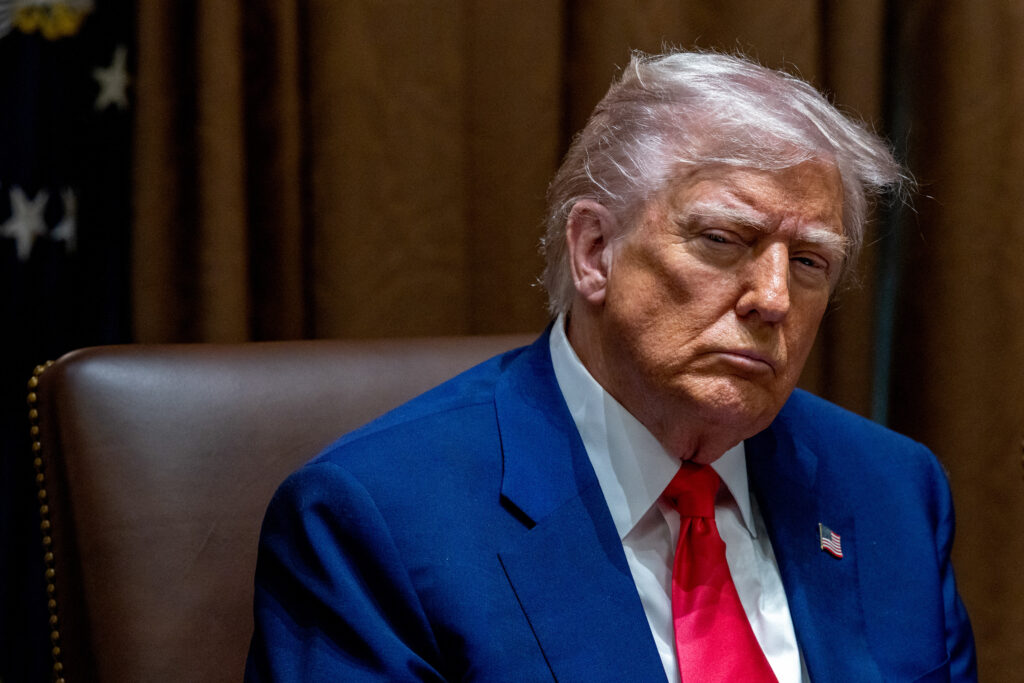Interviews / Gender and Geopolitics Observatory
17 April 2025
Trump 2 and Gender Minorities: What Are the Breaks with the Past?

If Donald Trump’s return to the US presidency was already seen as a threat to the rights of sexual and gender minorities, the speed at which exclusionary policies have been implemented and the extremism of the rhetoric directed at these groups represent a genuine rupture. In what historical context of the United States does this political and ideological project fit, and how can it be characterised? What are its impacts on American society? An update with Marie-Cécile Naves, a specialist in the United States and gender issues, and a research director at IRIS, where she leads the Gender and Geopolitics Observatory:
Donald Trump has made a deliberate choice to target the issue of gender, particularly since his second term. In what way can we speak of a break with Joe Biden?
With Trump 2, on this issue as on others, the break with the Biden presidency is total – both on principle (to undo his predecessor’s legacy on women’s and LGBT rights, just as he did with Obama), and for tactical reasons, as the anti-trans and anti-diversity/equity obsession allows him to divert attention while pushing a deeply discriminatory agenda.
Moreover, the question of gender is not limited to a set of measures or counter-measures. It is also a style of governance and a communication strategy: predation, domination, and intimidation are part of “the Trump brand”, and in foreign policy, we are witnessing the implementation of a real “club diplomacy” (imperialism, insults, threats). Trump 2 claims to be “anti-gender”, when in reality, at all levels, it is a deeply gendered policy!
Another difference with Biden can be seen in the choice of government members and advisers: it’s a white boys’ club, fully assuming itself as such. Biden had a gender-balanced and multicultural cabinet and administration. Trump, on the other hand, wants to project an image of male and even masculinist power, supposedly conveying strength, but also merit and competence. However, the disastrous Signal episode (the leak of US military plans against the Houthis in a messaging thread involving a journalist) casts doubt on the supposed innate competence of this boys’ club.
Could we have expected the Trump administration’s assault on gender issues to be so violent from the very beginning of his second inauguration? Is this a continuation of his first term?
Yes, it was to be expected that it would be much more violent than in 2017. I wrote a book analysing Trump’s first term through the lens of gender, entitled Trump, la revanche de l’homme blanc. The rights of women and sexual and gender minorities were a prime target of Trump 1, and we know in particular that Donald Trump’s appointment of three ultra-conservative, if not far-right, judges led in 2022 to the deconstitutionalisation of the right to abortion. But today, we are going much further.
The 2024 campaign was marked by a torrent of hate speech (insults, lies, and even incitement to violence) against certain populations, which set the tone for his future presidency. There are too many examples to list them all, but here are a few emblematic ones. Trump, for instance, signed a text establishing that the United States recognises only two sexes defined at birth, to which each individual is assigned for life. This bears no relation to reality – not only socially (i.e. real people’s lives, many of whom face enormous administrative difficulties with identity documents, etc.) but also biologically, since this presidential “decision” denies intersex variations, as sex identity is complexly defined by genetic sex, gonadal sex, and visible sex.
This also manifests in access to certain professions (trans people are banned from serving in the military and likely from other professions in future) and to certain services (healthcare, social benefits, etc.). Books discussing gender are being banned in school libraries and some bookshops, and there are attempts to erase academic work on trans identities in history, medicine, sociology, etc. Ultimately, it’s a denial of existence: they are being erased, they no longer exist. Beyond that, it also opens the door to the acceptance – even encouragement – of violence against non-binary and transgender people (real or perceived). They are delivered to transphobic vindictiveness.
What’s more, not only adults but also children are being targeted. By spreading the falsehood that “millions of children and teenagers are changing sex because of the trans craze”, Trumpism is now depriving children with early-onset puberty or cisgender adolescents seeking procedures like gynaecomastia surgery (i.e. the vast majority of gender-affirming care) of essential treatment.
And under the guise of “protecting” girls and women, children, teenage girls and adult women are already barred from taking part in sports at school, college, university, and in competitions. Through sport, Trump seeks to define “proper femininity” and determine “female eligibility” to participate in collective leisure activities. In fact, the trans question has enabled the MAGA (Make America Great Again) movement to reactivate an ultra-conservative grassroots ecosystem, which had previously lost the legal battle on same-sex marriage (which could also be under threat in the future).
What political project do these antifeminist, homophobic, and xenophobic hatreds – combined with a virile approach to power – pursue? Is this unprecedented in history?
The attacks on research, critical thinking, and even education (let alone books) fall within the same logic. And it’s not only social sciences being attacked: gender studies are an analytical tool and a body of knowledge used in numerous fields such as medicine and biology. Obscurantism is a key ally of Trump 2’s presidency: keeping the population in ignorance supposedly makes it more docile (at least, that’s the fantasy). The banning of certain concepts in official texts and on federal administration websites (“gender”, and even “woman”), the destruction of scientific data – all of this is entirely coherent: what is not spoken or written does not exist. Victims of misogyny, homophobia and transphobia do not exist. Only what is decreed by federal power matters – a bit like the “Ministry of Truth” in the novel 1984.
Moreover, Trump 2 clearly shows that “anti-wokism” in reality fuels a programme that undermines the rule of law. Under the pretext of fighting the “excesses” of diversity-promotion policies and efforts to combat gender or racial discrimination, the White House – along with numerous Republican-controlled federal states – is restoring forms of discrimination abolished since the 1960s, reinforcing privilege, and rehabilitating white supremacy and patriarchy. This is the first step in democratic breakdown: today the targets are trans people – who will it be tomorrow?
This is not only fully assumed but also theatricalised. I can’t say whether it is historically unprecedented, but what is clear is that feminist and anti-racist movements (Women’s Marches, #MeToo, #BlackLivesMatter, etc.) have terrified far-right America, which does not underestimate their strength or popularity. For them, it is a war to be waged against women and minorities – a war that can only be carried out outside the democratic framework: by circumventing the law and the Constitution.
A number of decisions issued by presidential decree by Donald Trump have indeed been blocked by the courts following complaints from human rights organisations – for example, the ban on trans people joining the military. But for now, the executive branch is not abiding by judicial procedures. Whether the courts are ultimately respected will be a major test of Trump 2’s presidency: if the separation of powers no longer exists, the United States will have truly tipped into authoritarianism.

